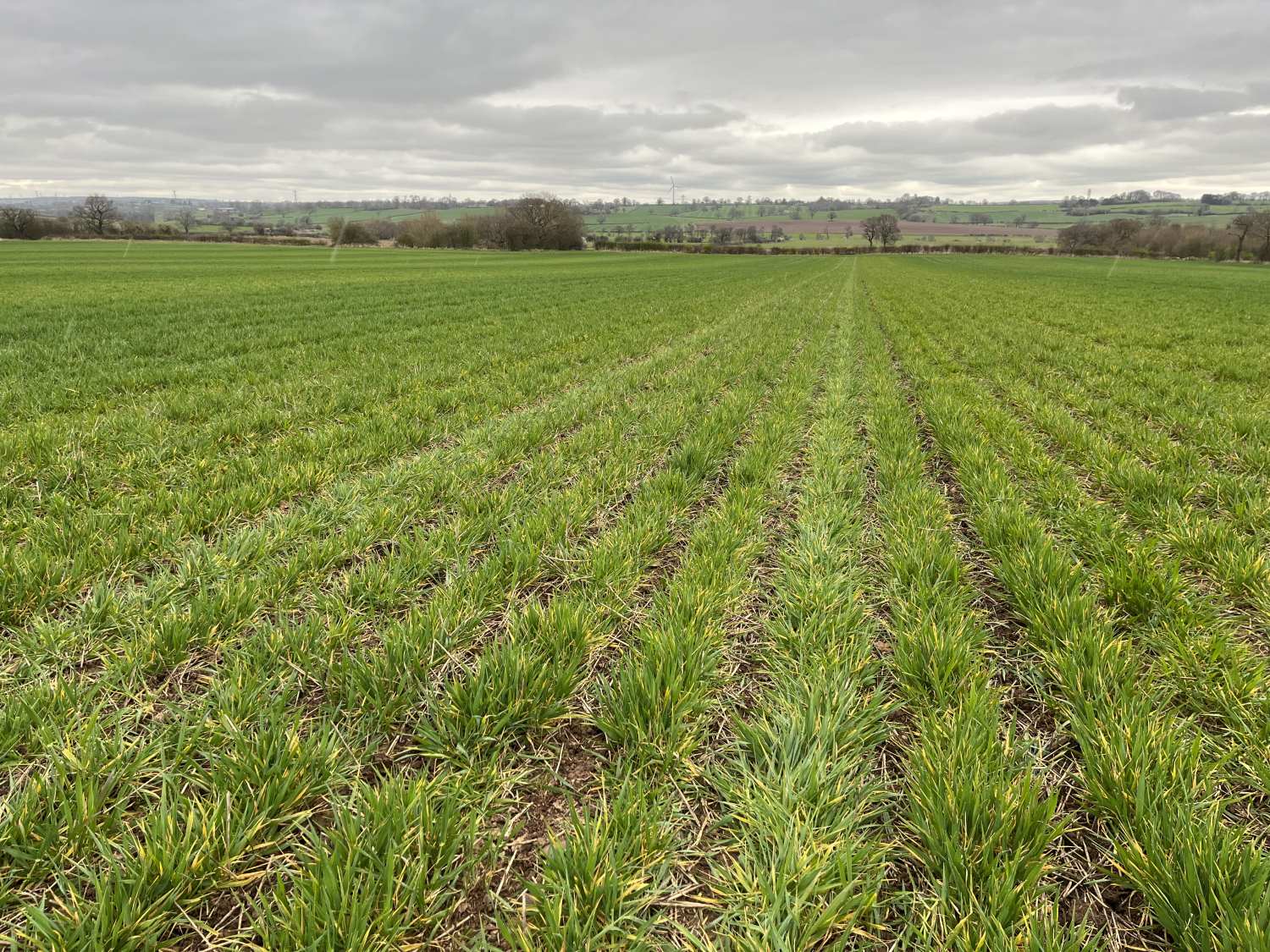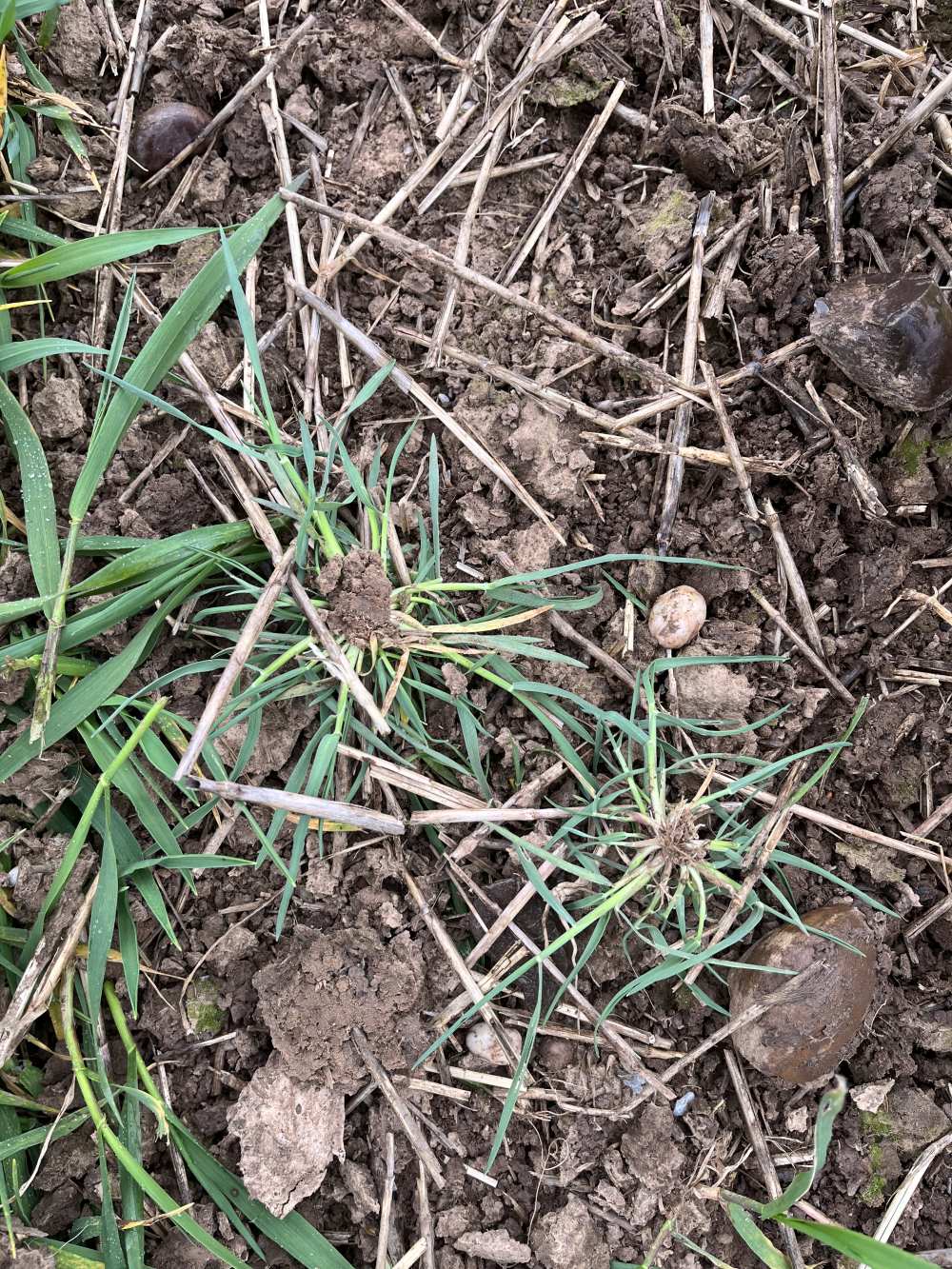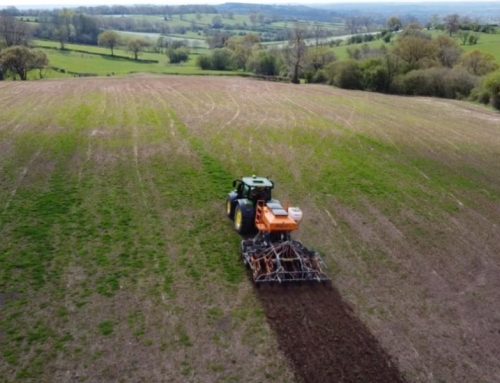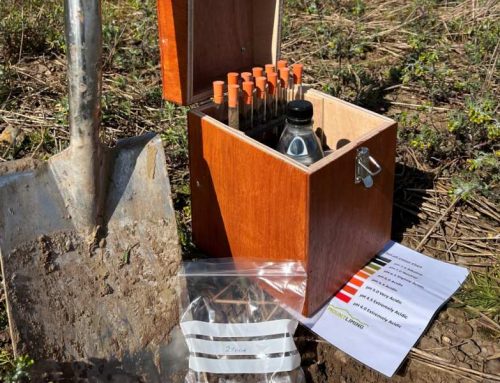Weed Hoe & Clover Seeding
It is now the 5th year that Jeff Tabernor of TP JP & JE Tabernor, Moreton house farm, Stafford has run the Claydon system.
Using a 3M Claydon Drill to establish crops into a heavy clay soil type has improved soil structure with the use of cover crops, a wider crop rotation and biological inputs over chemical.
This season Jeff has invested in a Claydon TerraBlade inter-row hoe which runs between the rows of the crop and acts as a mechanical method of controlling weeds with a view to further reducing the reliance on herbicides.
By keeping the unseeded rows clear of weeds during the early stages of crop growth, competition for nutrients, light, air, and water is reduced and the young plants can grow away strong and healthy.
The TerraBlading in the video above was carried out in the last week of March in a crop of winter wheat was drilled at 425 seeds into a 3-year Grass Ley which was drilled with a short-term cover crop grazed with sheep before drilling in September.
The blades of the inter-row hoe cut out the weeds just below the growing point. Pictured below is the hoed field one week later, with a dead black grass weed on the soil surface. A noticeable habit I saw was the fact the weed hoe has a brilliant way of turning the weed upside down.


Dealing with weeds at this stage before they become problematic reduces the carryover of weed seeds into subsequent crops.
As more focus is on finding alternatives to chemicals, which are losing their efficacy, mechanically weeding with this machine offers another option in the weed control tool bag.
Fabricated at the rear of the tractor is a broadcasting unit which puts clover into the standing crop, with the weed hoe creating a minimum tillage pass for the clover to gain seed to soil contact.
White clovers are a top choice for “living mulch” systems planted between rows, they are persistent, widely adapted perennial nitrogen producers with tough stems and a dense shallow root mass that protects soil from erosion and suppresses weeds
Clover in pastures is nitrogen fixation. The earth’s atmosphere is made up of about 80 percent nitrogen; this nitrogen is not, however, in a form plants can utilize. Nitrogen is “fixed” in clovers through a symbiotic relationship with Rhizobium bacteria that infects the plant’s roots. The plant provides energy for the bacteria, and bacteria provide the “machinery” necessary to convert atmospheric nitrogen into a form available to plants. Nitrogen fixation is one of many economically important features of clover.
White clover has several soil nutrient requirements for satisfactory establishment and growth. Soil acidity influences availability of several nutrients and decreases survival of Rhizobium bacteria, which are necessary for nitrogen fixation. Soil should be limed to a minimum pH of 6.0.
White clover performs best when it has plenty of lime, potash, calcium and phosphorus, but it tolerates poor conditions better than most clovers.
Notice that Calcium is the major Cation in a healthy soil. Calcium promotes good crumb structure in soil and is important for numerous other soil processes.
After reading William A. Albrecht’s book on calcium the more I have learned that Calcium is THE KING OF ELEMENTS. “Calcium is at the head of the list of the strictly soil-borne elements required in the nourishment of Life” Calcium can potentially have a beneficial effect on biological, physical, and chemical properties of your soil if it is needed.





